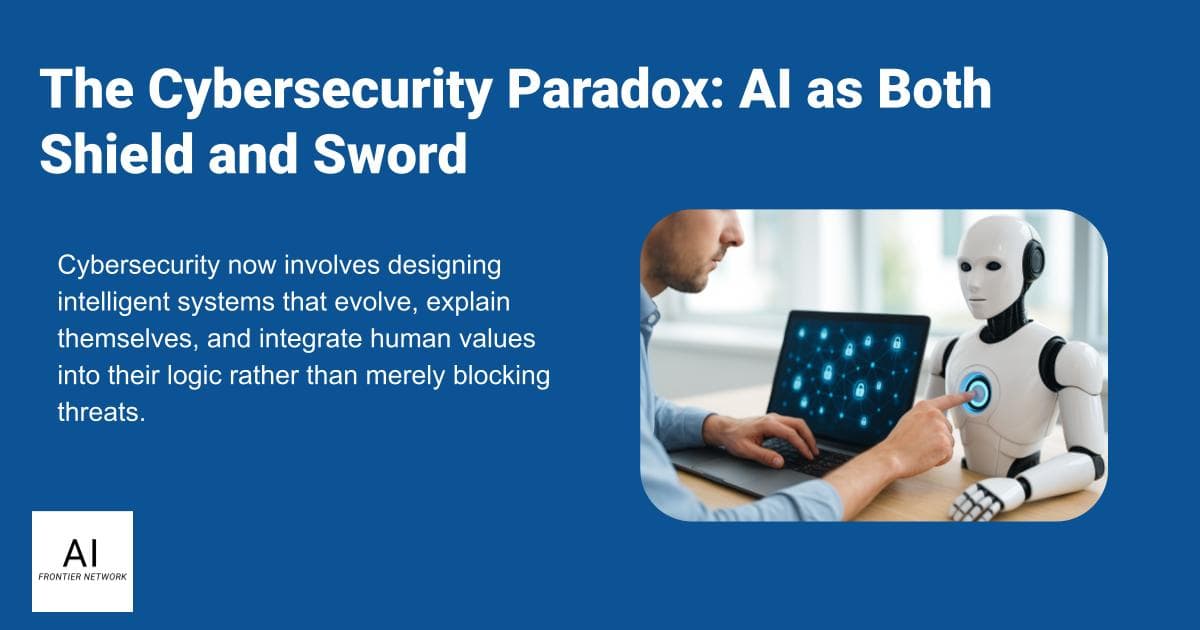We used to think of cybersecurity as a digital lock on the door—an IT problem to be solved with software updates and strong passwords. But today, the reality is far more complex: Artificial intelligence has become both our strongest shield and our most unpredictable weapon. The insights of AI experts reflect a world no longer defined by humans versus hackers but by AI versus AI—a domain where defense and offense evolve simultaneously and where the biggest challenge may not be technology but trust.
From Static Checklists to Dynamic Resilience
Cybersecurity has historically been reactive—patch vulnerabilities, wait for alerts, follow checklists. But as Rajesh Ranjan notes, "AI is ushering in a paradigm shift in cybersecurity," one where intelligence becomes embedded, adaptive, and anticipatory. We are moving away from human-limited, rule-based systems toward dynamic networks that can learn from anomalies in real time.
This shift demands a rethinking of architecture. Arpna Aggarwal emphasizes the importance of integrating AI into the software development lifecycle so security becomes a built-in mechanism rather than an afterthought. This view aligns with Dmytro Verner's call for organizations to abandon "static models" and instead build systems that simulate, adapt, and evolve every day.
The Generative AI Dilemma: Savior or Saboteur?
Generative AI represents both a revolution and a risk. As Nikhil Kassetty puts it, it's comparable to "giving a guard dog super-senses, while also making sure it doesn't accidentally open the gate." Tools like ChatGPT, Stable Diffusion, and voice cloning software empower defenders to simulate attacks more realistically—yet they also arm bad actors with the means to create nearly undetectable deepfakes, fake HR scams, and phishing emails.
Amar Chheda points out that we're no longer dealing with hypothetical risks. AI-generated content has already blurred the lines between real and fake passports, invoices, and even job interviews. This serves as a chilling reminder that we're not preparing for a future threat—it's already here.
To stay ahead, Mohammad Syed suggests adopting AI-driven SIEM systems, predictive patching, and partnerships with ethical hackers. Nivedan S reminds us that responsive measures alone are insufficient. We need adaptive security architectures that learn and pivot as rapidly as generative AI evolves.
Human-Centered AI Defense: Training, Not Replacing
Despite AI's power, humans remain the most common point of failure—and paradoxically, our best line of defense. Training employees to recognize AI-powered scams is now essential. Syed proposes generating hyper-realistic phishing simulations, while Abhishek Agrawal stresses that the speed and personalization of attacks will increase as generative AI evolves.
The risks extend beyond enterprise systems. In education, as Dr. Anuradha Rao warns, students unknowingly sharing teacher names, login issues, or school data with AI tools could create massive privacy breaches. The key insight: AI tools are only as secure as the users interacting with them—and users, especially younger ones, often lack awareness of the stakes.
Shailja Gupta states clearly: building secure environments requires more than technical safeguards—it demands trust, transparency, and continuous learning. Education must extend beyond engineers and into everyday digital literacy.
Governance and Ethics: The Quiet Battlefront
As AI takes on greater autonomy in detection and decision-making, we need strong guardrails. This requires both technical solutions and transparent governance structures. Arpna Aggarwal suggests auditing AI models for bias, using diverse training data, and complying with standards like GDPR and the EU AI Act.
A proactive governance approach includes designating an AI Security Officer, as proposed by Mohammad Syed, and requiring vendors to disclose AI integrations. These measures might appear bureaucratic, but they're crucial for ensuring that AI remains a tool of defense rather than unchecked automation.
Dmytro Verner takes this concept further, proposing "self-cancelling" AI systems—models that lose functionality or shut down when they detect misuse. This represents a radical yet necessary idea in an era where ethical boundaries are increasingly easy to cross.
AI in the Wild: Beyond Corporate Firewalls
Cybersecurity now reaches far beyond IT departments. Aamir Meyaji highlights how AI is transforming fraud detection in e-commerce, using behavioral biometrics, adaptive models, and risk-based decision-making to stay ahead of increasingly subtle threats. These systems learn from every transaction rather than simply blocking bad actors.
Similarly, Amar Chheda and Abhishek Agrawal remind us that social media and personal data have become common entry points for attacks. AI-generated scams are often hyper-personalized, making them harder to detect and more psychologically manipulative.
This demonstrates that cybersecurity now spans education, retail, finance, and beyond. Defense must be cross-functional, context-aware, and deeply embedded into user experiences.
Conclusion: The Real Arms Race Is Strategic, Not Technical
The most powerful insight across these perspectives transcends new AI tools or techniques, it concerns mindset. Cybersecurity now involves designing intelligent systems that evolve, explain themselves, and integrate human values into their logic rather than merely blocking threats.
As Rajesh Ranjan observed, the future holds a reality where AI doesn't simply support security, AI becomes security itself. This can only happen if we build it properly, which requires asking the right questions, embedding ethical design, and maintaining humans at the center of it all.
In the age of AI versus AI, success belongs not to the smartest system, but to the most thoughtful one.









